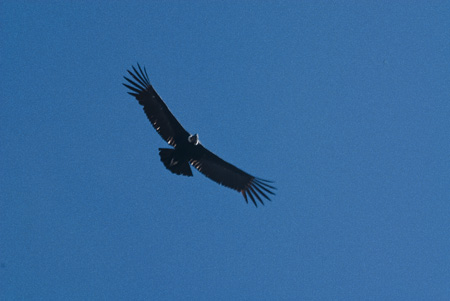Altitude
In Peru everyone calls me the ‘Alto Mujer’, the tall woman. I sort of stand out in crowd around here, which is probably why I was picked to be robbed. But Alto, as in ‘Altiplano’, or the high flat plains between the mountains, are one of the reasons why I wanted to come here and so I headed from Arequipa to the Canon del Colca, the second deepest canyon the world by a bare 150 meters (and twice as deep as the Grand Canyon).
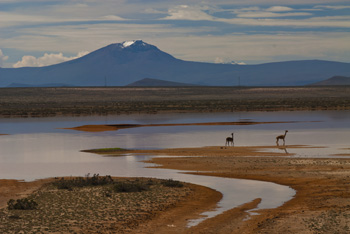
To get there you must go to the high places where the windswept mountainsides are constantly repainted by clouds and as far as the eye can see are rocks and more rocks and stunted clumps of ichu grass that are the primary fodder for camalids like domesticated llama, and alpaca, and the dainty vicuna that lives wild in a huge natural reserve created for them. Picture windswept plains and tiny flowers and the mighty volcanic peaks of El Misti (5822 m), Picchu Picchu (5571 m) and Chachani (6075 m) looming above everything. The air is clear and smells only of dust and grass and sometimes animal manure, and aside from the wind, there is only silence until a truck or tour bus passes.
I was fortunate. I paid for a car and driver for two days and Edgard was the perfect person. He spoke no English and I speak very little Spanish, but we got along sharing my Spanish/English Dictionary and he told me things about the places we went. The road went up and up through this staggering landscape until we reached the viewpoint of the volcanoes which stands at 4,900 Meters. Yes, meters.
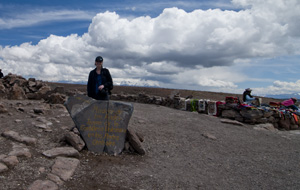
On all sides are these huge peaks and in the foreground small traveler’s cairns too numerous to be counted that give praise for having made it that far and to pray for good luck with the rest of their voyage. This was so similar to practices in India and Tibetan, China, that it made me realize how right the Inca were when they thought the huge mountains were inhabited by Apus, or gods.
From there we headed down towards the canyon and the small town of Chivay that sits at its head. Unfortunately I was struggling a bit with the altitude as we were still at 3,630 meters. It is a small town, but the capital of its District, and everywhere you went there were signs about the upcoming elections that occur April 10. The main square (Plaza des Armas) has a lovely fountain and tree-shaded benches and I spent a few hours relaxing in this slower paced life and watching he women in their traditional clothing.
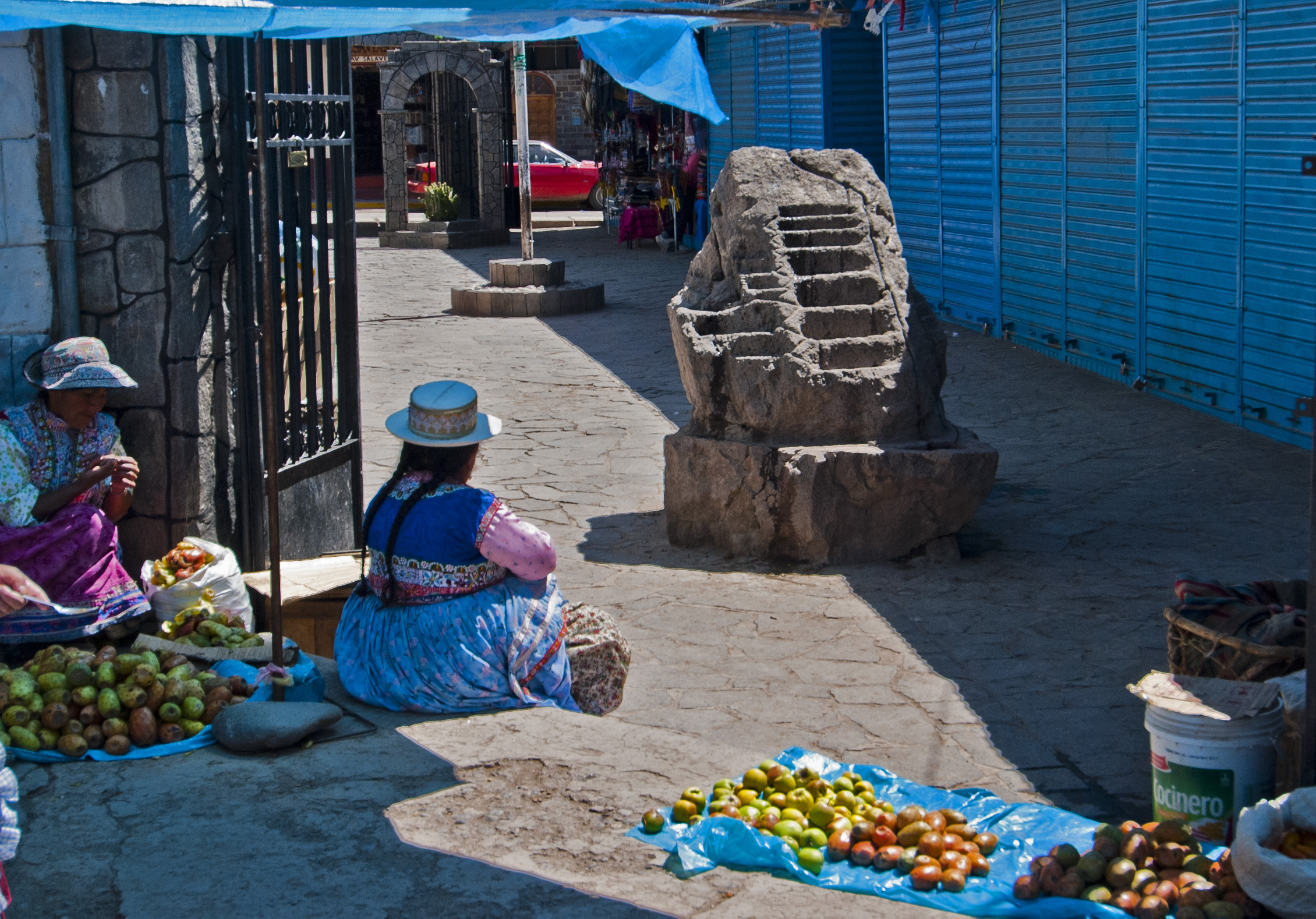
Edgard and I drove out the next day to see the valley. Actually, I almost called the whole thing off because I was feeling so ill, whether from Altitude sickness or the flu, I wasn’t sure. But at the last minute I thought I’ve come so far to see these birds and this valley, so I had to go.
So we went, through a valley that was filled with incredible Inca terracing up the mountainsides, each with their own microclimate so while one might be perfect for potatoes, others are perfect for Maize, or Quinua. We saw ancient tombs from pre-Inca times, and Inca-age rocks carved to keep track of the terracing. And then there was Cruz Del Condor.
Like entering a passport hall at a major airport, there was every language being spoken around you from the crowd that had made it this far to see. We were all perched in this high point of the cliff wall, waiting for the word the Condor had taken off and was rising up the cliff wall. I was there for one hour and saw one bird, but breathtaking isn’t the word. The swoop and soar on the wind. Everyone drew a breath so all you could hear was the swoop of huge wings and the frantic clicking of camera power-winds. And then he was gone. Magnificent and ephemeral as he swept away upwards and over the cliffs behind.
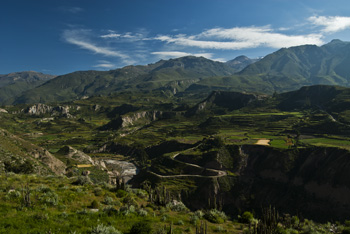
So Edgard left me with best wishes for my journey and went back to his lovely family in Arequipa. Apparently, his wife is an obstetrician and his children are studying medicine and engineering. Yesterday I climbed aboard a bus to Puno and drove 6 hours through the high altiplano again, but this time southeastward toward Lake Titicaca, that sits at 3,830 meters above sea level.
The countryside seemed filled with curves of hillsides that cloud shadows made seem to fold in on each other. A few lakes filled deep valleys, but mostly they are shallow affairs that overwinter flamingos. We arrived in Puno at 7:30 pm, coming down out of hills to see great arcs of darkness surrounded by lights. The darkness? Lake Titicaca.
So today I am in Puno, but unfortunately I’ve not seen much other than what I saw last night. You see, there is a price to be paid for being Alto in the altiplano world. The people here are built short and barrel-chested for a reason. Me, I’m about the antithesis of that physiognomy, and given I’d been sick from the moment I left Arequipa, I finally called a doctor. It seems the altitude has given me high blood pressure.
Which has made this Alto Mujer, a little more Plano at this moment.
But it was so worth it.
